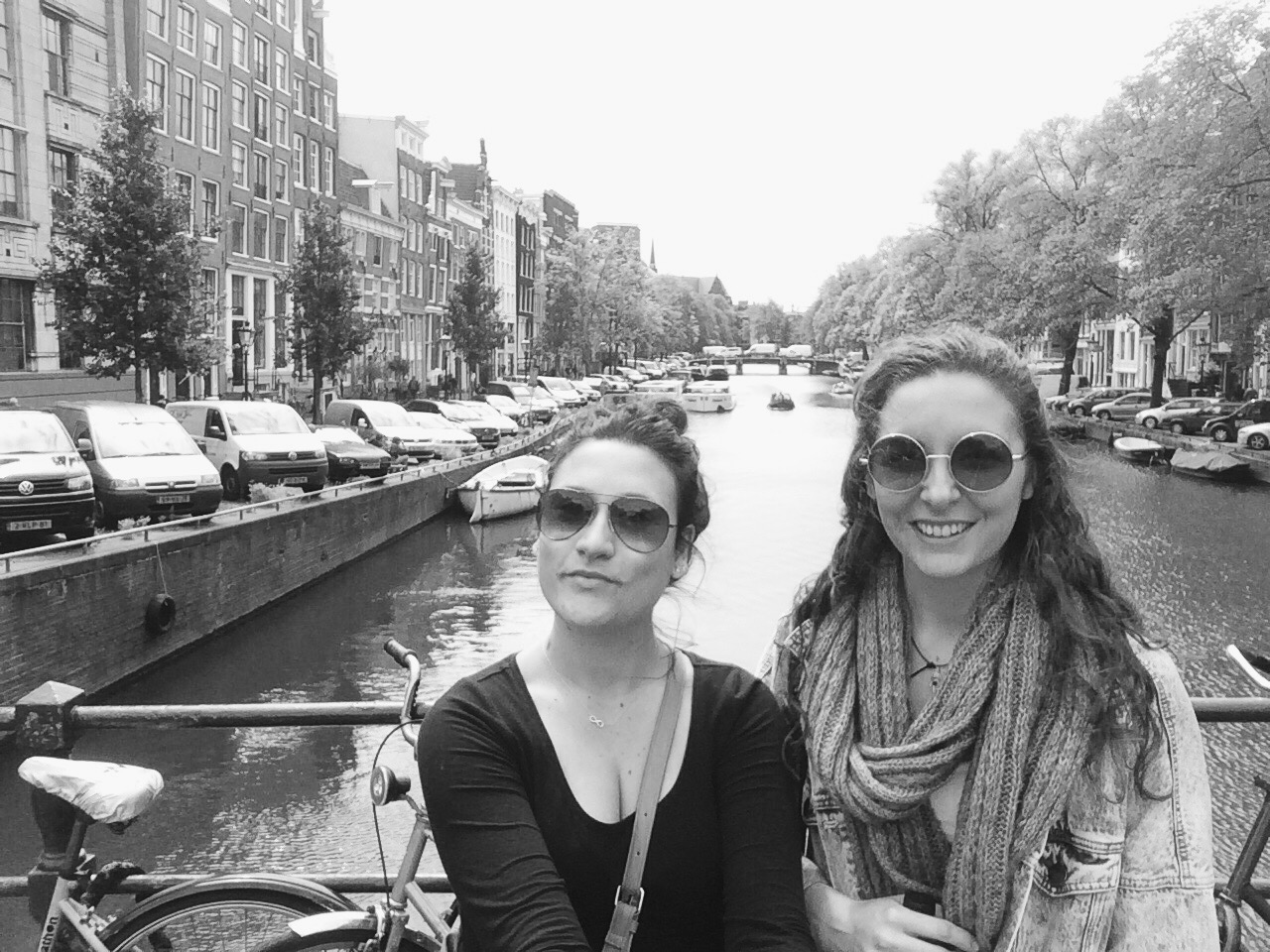
by Sarah Blinco | Feb 14, 2016 | Europe, Travel blogger destinations, Traveller tales and interviews, United Kingdom
Last year, 21-year-old Jordan Lea Hart, embarked on a once-in-her-young-lifetime trip abroad. While she’d enjoyed a holiday or two closer to home and with family, this was her first significant trip overseas – just she and her best friend, Rachael. We’d spoken to the girls a few times about travel and life abroad, and were very excited to hear when they took the massive step to book and confirm it all.
Jordan Lea and Rachael enjoyed the same tour of Europe with Expat Explore that we did in 2011 (on just the second 26-day itinerary since the group launched it), and I was keen to find out more about the experience, their tips and stories of travel and friendship. Most importantly, I was keen for insights into why they too, advocate taking the chance to travel, live and learn!
When did you travel to Europe?
In July and August 2015, European summer time.
This was your first major overseas trip – how did the decision come about to do it?
Throughout high school, my best friend and I always talked about travelling to Europe, specifically London, because we love historical buildings and English boys! Once we finally had enough coin we booked it.
When did you decide what type of travel option to pursue?
I wanted to do a coach tour as it just seemed like the most cost-effective way to get a taste of each country. Originally the plan was to go on a month tour, then rent a car and road trip around Ireland, Scotland and Wales, however that didn’t end up on the agenda due to work and study commitments.
We decided on Expat Explore’s 26 Day Ultimate Europe Tour because it is great value for money (even considering the conversion from Aussie dollars).
One of the first things our tour guide, Will, said was, “You guys are travellers, not tourists, we are not going to hold your hand everywhere you go, it’s up to you. YOU create your journey, we just guide.”
It was awesome because that’s exactly what he did – told us the way to our hotel, how to get home, and what time we would be leaving for the next trip. We never considered a party-type tour, we really wanted to make the most of our travels, not spend the time in bars 24/7 and hung-over every day! Not to say we didn’t have a few cheeky drinks.
Was there anything you were worried about prior to taking this big trip so far away from home?
I was worried about missing home too much; I was in a brand new relationship so this trip was a massive test on us. I missed him terribly but we survived it, thank God for Viber.
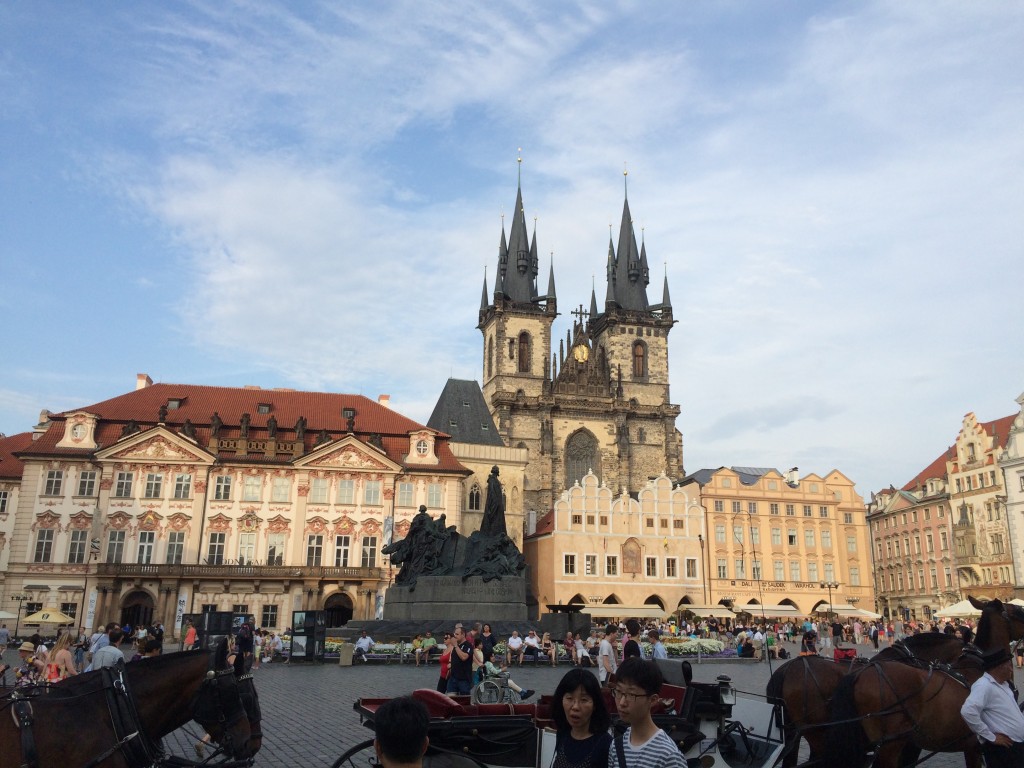
Do you think you were well prepared for the trip, or did you learn along the way?
Prior to us leaving I quit my job! I was treating this trip as a fresh start for me, to get perspective on what I really want. I had to be very careful with my money, budgeted a lot, made trips to the local supermarkets to get fresh fruit and snacks for the long coach journeys.
Clothing was something I was not prepared for. I was under the impression Europe would have cold days, and I would only need so many shoes or pairs of socks. The little things ran out fast, and I packed about 10 jumpers and no summer clothes. That was a massive wake-up and I spent a lot of money buying summer basics (most of Europe is hot in summer!). But I learned little tricks after a few weeks, like washing delicates in the sink then rolling them up in the bathroom mat so they dried a lot faster.
I also thought this would be a great best friend trip, just myself and Rachael the whole time! But we met some lifelong friends, we created ‘the squad’ after two days on tour – myself, Rachael and three rowdy British girls – we were inseparable.
What were three highlights of Europe?
The whole trip was a highlight but I do recall a few special moments.
Our first stop was Amsterdam, and Expat scheduled an optional activity for day one on the road. Everyone else on the bus went except Rachael and I; We ditched it. Woke up late, caught the train into the city centre, wandered around just taking it all in for six hours. We walked away from all the tourist areas and went local. We found all these amazing hidden cafes and lunch hot-spots. It was beautiful and so peaceful to just wander and soak up all the culture. Once we got back to tourist-central, we naturally tested the devil’s lettuce from the local coffee shop (not to be confused with cafe) and ended up having the wildest night of our lives.
Sneaking into random hotels, running along the canals and eating the best yogurt and fruit anyone could ever have – our first day was done right.
The second highlight for me was meeting the squad, Alice, Anya and Sara. Here are five girls with completely different backgrounds and we clicked instantly as if we were long-lost soul-mates. We had one night in the Rhine Valley where we all had too much wine, ended up smashing karaoke with a Spice Girls comeback, and we were almost as good as the real thing. So many nights were unforgettable with these girls!
Barcelona was an absolute highlight for me personally; the culture of that place blows my mind! Oh and the sangria!
The last highlight, even though bitter-sweet, was our final night of the tour in France, sitting under the Eiffel Tower and its 9pm light show, drinking mini bottles of wine, with our cheese dips and chocolate.
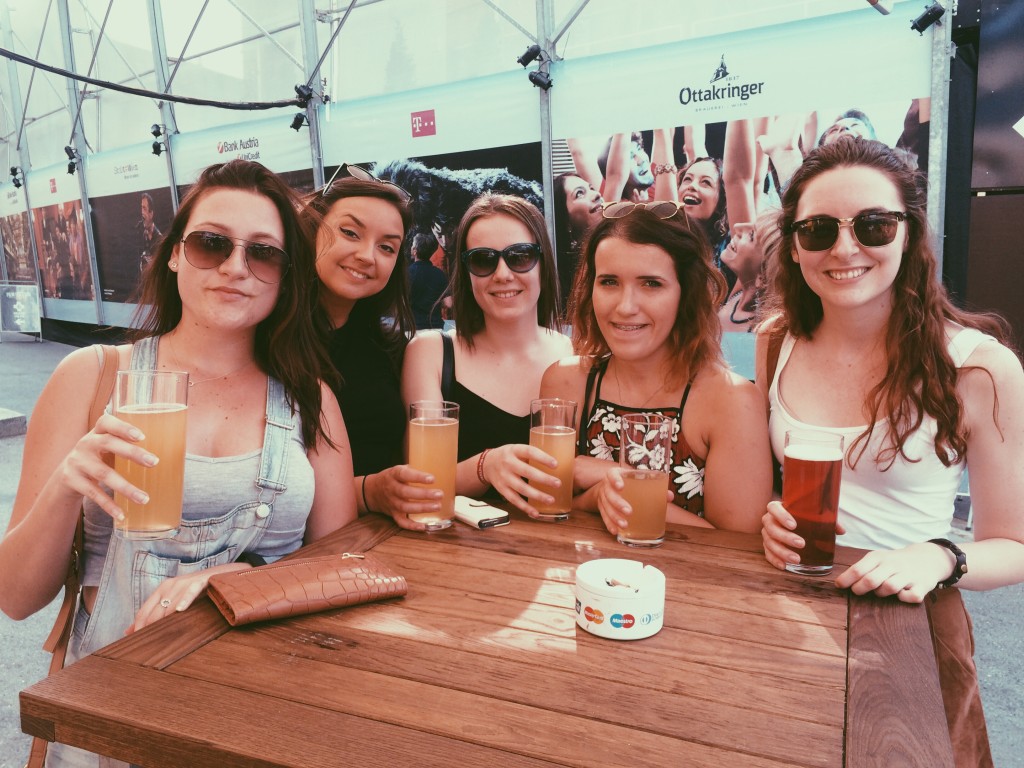
Some England highlights?
The UK was a short but sweet stay, four days in total, but so full of life. We went to the markets, Harry Potter studio tour and stayed walking-distance from Oxford Street. Also spent a night drinking cocktails with some of my favourite people. It was the perfect end to our trip.
What did you learn about yourself through this experience?
That if I set a goal to do something it will be achieved. And, that I can successfully catch public transport in any country! It helped me also appreciate how lucky I am to have had the chance to do this at 21. Most people don’t get that chance, even couples on our tour said this was their first holiday overseas and they were well over 50.
How has such a significant travel experience shaped the way you are now planning for your future?
It only makes me want to plan for more! I have the thirst for travel, the way it opens your eyes is something else. The world is a fascinating place.
What’s your advice for anyone planning to travel or tour Europe in the summer?
You need a reliable water bottle, sunscreen and good walking shoes.
Be warned of the crowds in Italy, it will have you feeling like you’re suffocating, so go see all the major sights in the afternoon, because in summer the sun doesn’t set until 9pm so it’s nowhere near as hot then.
Learn the underground in European cities. Local trains usually work like clockwork and will take you anywhere you need to go. It all works in colour lines so don’t worry about not knowing the language if you need to get around.
In France, buy souvenirs from the salespeople on the street, not stalls; the sellers are lovely and you get the same thing but for half the price!
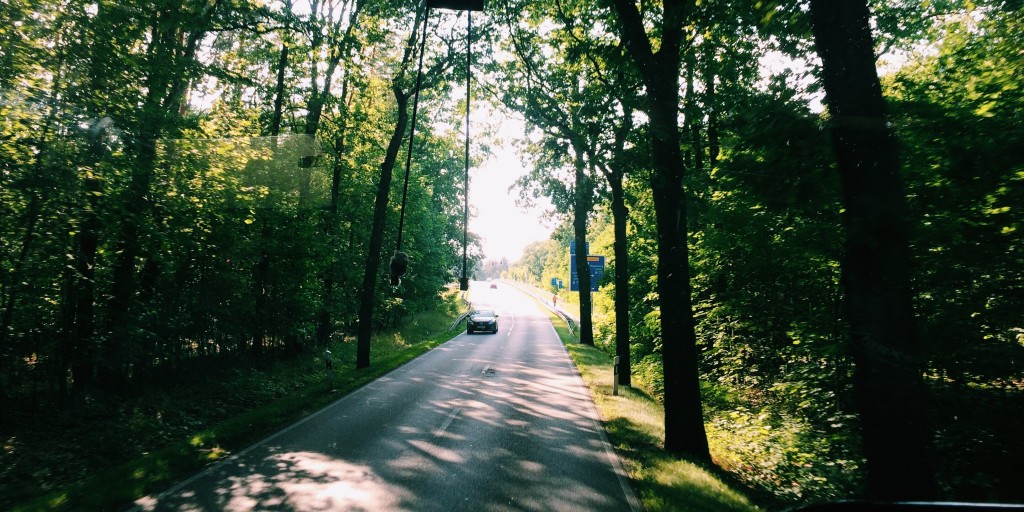
What are your essential travel planning websites and apps?
In Europe, always search for the city metro map and have a screen copy on your phone for reference. In London, download the app Kabbie. I would have been lost without this – it’s like Uber but cheap. Another helpful tip is to buy your food and alcohol for your trip. This saves you so much money; the supermarkets have everything you could ever need! Don’t get stuck buying supplies at expensive bars or corner stores.
Would you recommend a tour and why?
Yes! Especially if you have never travelled to that country before, it helps you get your bearings and you have a whole coach support system; a tour guide who you can bother with a thousand questions as they know all the good spots, and you meet amazing people. Once you have done a tour, you can go back the places you enjoyed and you’ll already have knowledge to get around like (nearly) a local!
What does travel mean to you now?
A world of opportunities! I have found what I want to do: work, save, travel.
Follow Jordan-Lea’s adventures on Instagram
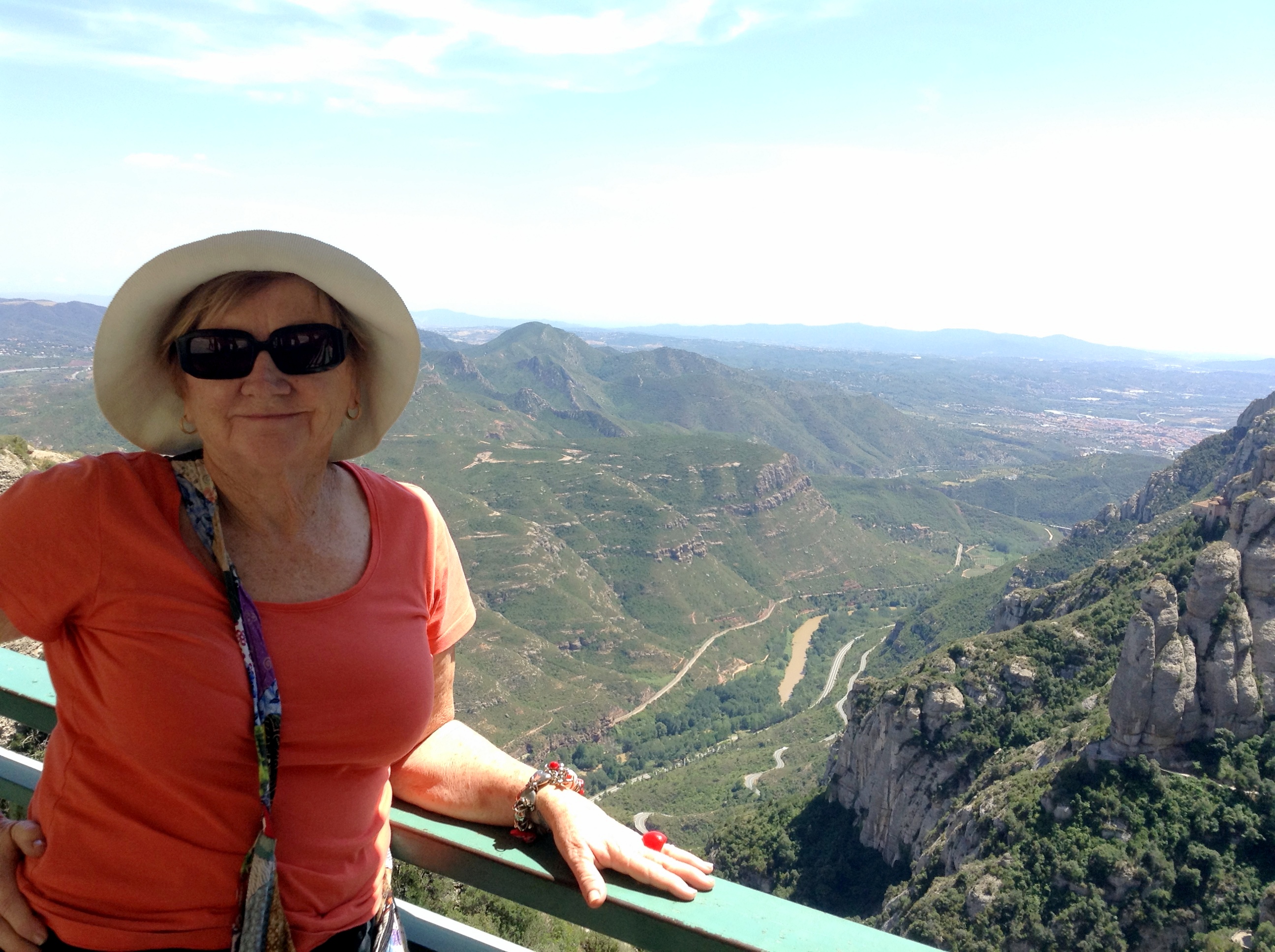
by Sarah & Cooper | Feb 7, 2016 | Being a digital nomad and working abroad, Creative travel experiences, Lifestyle, Travel blogger destinations, Traveller tales and interviews
Lorraine Dawson decided to learn Spanish a few years ago, after harbouring a desire to do so for many years, but simply never having enough time to begin.
She didn’t let living on the Gold Coast in Australia deter her, and went about finding classes and tutors who could enlighten her on how to learn a language at any age.
Last year Lorraine finally had the chance to put her skills to the test on a visit to Barcelona.
We think she is a wonderful example of someone who overcame fears and challenges of learning a new language, particularly as a mature student, so we have asked her some questions on how she did it, what she’s up to now and her advice for others who might like to try…
How to learn a language at any age
Why did you choose Spanish as the language to learn?
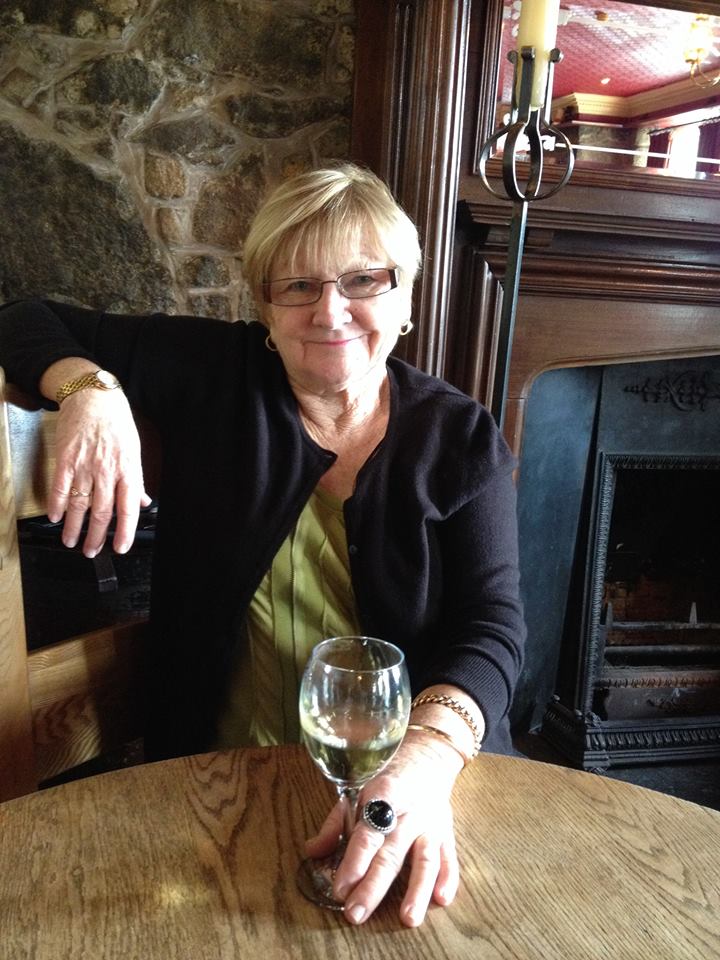 Four years ago (2012), after being retired for six years, and at the age of sixty eight, I looked up the U3A (University of the Third Age) website to see what courses were on offer, and to my delight, ‘Learning Spanish’ was one of them, so I decided to enrol.
Four years ago (2012), after being retired for six years, and at the age of sixty eight, I looked up the U3A (University of the Third Age) website to see what courses were on offer, and to my delight, ‘Learning Spanish’ was one of them, so I decided to enrol.
I had been misinformed about Spanish being the easiest language to learn, which is why I chose it! I actually never had any specific language in mind.
When did you start studying?
When I turned 68 I decided it was time to stop procrastinating and enrol. Signing on for my first Spanish course was an achievement in itself. To say I was a little nervous and anxious would be an understatement.
Our teacher was a Spanish-speaking lady called Trinidad, who comes from the Canary Islands. There were about fifteen people in the class, twelve of whom had already been studying for a year or two, and some already knew another language, apart from English. There were three of us who were beginners.
I would be lying if I said I found it easy to start with. We had typed sheets from which we worked, and at first I didn’t know where I was. For the first year I felt embarrassed that I could not answer the questions or translate the reading, which was in Spanish.
This was compounded by the fact that except for the beginners, everybody else could. I realise I had unrealistic expectations about how quickly I might grasp the language, but that is how it was. It was hard. One of the ladies who started with me dropped out after a few weeks, and the other one dropped out of the class after the first year.
Can you explain a little about the steps you’ve taken through the process of learning Spanish?
I went for one hour a week, and we did not go in the school holidays. We had homework. The first year was the hardest.
The second year was better. Our teacher went overseas for four months, and did not continue teaching at U3A. She decided to teach the class at her home, and we were separated into an intermediate class, of which there were three of us, and an advanced class.
The two ladies in my class have sons who live in Spain, and had married Spanish girls, so they decided to learn Spanish to be able to converse with their daughter-in-law and their families.
I progressed much better in the second year.
Once we were separated into an intermediate class where there were just the three of us, I felt more comfortable being with people who were on a similar level to me in the learning process.
Almost all of the people in the two classes were retired school teachers, whereas I had left school at fifteen. I would forget what a “conjunction” was, but I just asked to be told again, whereas the retired teachers didn’t forget these sort of things.

What did you gain out of actually having the chance to be immersed in the language in Barcelona in 2015?
I went to Spain with my son for five days and I made sure every day that I was there that I spoke Spanish as much as I possibly could, even if it was just asking for a cup of te con leche, por favor (tea with milk please). It was such fun.
When I arrived at the hotel, I informed the staff on reception that I was learning Spanish, and that I would be attempting to speak to them in their language, and would they please correct me when I was wrong.
They found this quite amusing, and were happy to oblige. My son was impressed with how well I was doing in learning Spanish. Being amongst the Spanish people inspired me to want express myself in their language while I was there, and I found they really appreciated the fact I was making the effort.
I won’t insult your intelligence by saying it is easy to learn a language at any age or at my age, but I have gained so much from trying. I have made it a personal challenge.
I keep telling myself, “You can do this, I AM doing this, and I will not let it get the better of me.” I am most determined about it. You don’t always remember what you have learnt, but that is OK, other people don’t either.
What are your best tips on how to learn a language at any age, for anyone keen to get started this year?
 I would highly recommend to anyone considering learning a second language, to go for it. It really gives you quite a boost when you see that you are capable of doing it.
I would highly recommend to anyone considering learning a second language, to go for it. It really gives you quite a boost when you see that you are capable of doing it.
Don’t worry if it seems hard and you think you will never get it. It does get easier with time! If you are a senior like me, I am sure it helps with your memory, and what an achievement that you are getting out of your comfort zone and trying something new. Just do it.
What do you think you personally have gained from pursuing the learning of a language, despite not travelling all the time?
I have made wonderful friends from the people in my class, especially my Spanish teacher, who now teaches me how to cook Spanish dishes, and always brings to dinner a bottle of Sangria which she has made.
The class have had social outings to restaurants where Spanish is spoken, and we have people from Spanish speaking countries come to our class to converse with us. I find it all such fun, and we have a lot of laughs, especially at our mistakes. Just get involved and you will get so much out of it.
Meet more of our travelling friends: why not take a wellness trip to Turkey, or find out what it’s like living as an expat in Serbia.
How to learn a language at any age – start here
If you’re reading this then you can get started online now. You could try:
MOOCs
Signing up for a MOOC (Massive Open Online Course) – see what’s on offer at Future Learn, iVersity, edX or Coursera – it’s free!
Apps
Top apps to help you learn on the go include Duolingo, Babbel, MindSnacks, Basuu, and Memrise.
Resources
A helpful places to start on working out the best way to learn Spanish for you is featured here on hobbyhelp.com
Software
Or see if any of this software is helpful – here’s a recent guide compiled by PCmag.com.
Do you have a question or comment? Drop us a line in the space below, or on Facebook or Twitter.
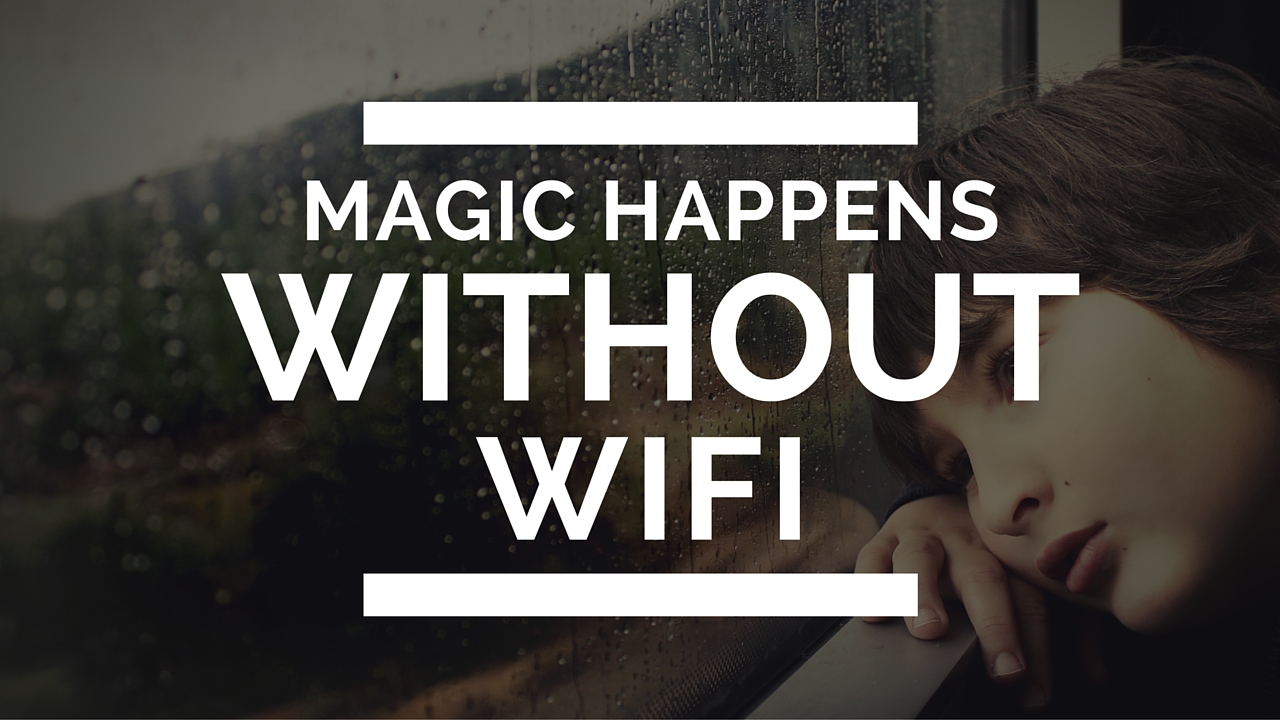
by Sarah Blinco | Jan 30, 2016 | Creative travel experiences, Lifestyle, Travel blogger destinations
~
Something magical happened this morning as I dwelled in life without WiFi. I couldn’t access any internet on a dawn train trip out of London, and in true form I’d planned to use my hour journey south to clear my email inbox. It wasn’t meant to be. Even my phone’s 3G wasn’t working, so social media wasn’t an option. Old school it was, then.
I sat back in my seat and watched the world flash by; a monochrome storyboard of England’s rich landscape.
As we rolled smoothly out of Victoria station, I was reminded once again how beautiful London is under the sleepy veil of morning darkness. Clean and crisp following an overnight storm, buildings and roads shone and the little lights dotted around construction sites along the Thames sparkled as if the city’s Christmas decorations were still on display. Leaning my head against the windowpane, my upward gaze mindlessly followed the paths of airliners gliding ever so gracefully; dark grey shadows, like ghosts against the pitch black sky.
I find the landscape here to be so enchanting, as urban sprawl unfolds towards Croydon – once upon a time I used to embark on this path daily. Here, I see evidence of the city’s years etched into the streets and rows and rows of old homes crowded against each other. Chimneys and steeples stretch into the sky, each harbouring stories of eras gone by.
Music played on in my earphones, and I recalled lengthy Greyhound coach trips as a university student in Australia, commuting between cities – pre-mobile internet; that would be my imagining time, when songs became soundtracks to narratives taking shape in my mind. A lyric from one of my favourite classic INXS tracks caught my attention: “We all have wings, but some of us don’t know why”, and just as it was sung, I looked around to see a section of an advertising billboard directly in my view – two golden wings proudly and preciously on display.
Life without Wifi meant I caught the loveliness of dawn as the sun rose across the UK on this day, which falls at the end of what was a week full of fantastic change for me; and pretty much at the end of January (already!). I enjoyed the subtle transition of cityscape to water-drenched patches of deep-green countryside. I hung out in the worlds of my most treasured music tracks, and was present for sweet moments and signs all around me that I simply would have missed had my nose been in my iPad. I had the opportunity to be reacquainted with the pleasures of observing, dreaming, and being inspired to put pen to paper (or fingers to keyboard, as the case inevitably will be). What a nice gift it was, to live once again with a beginner’s mind and indulge in the pleasures I thought were only on offer to me as a creatively indulgent teen (apt that it should occur the very week The X-Files returns).
Life without WiFi – I’d encourage you to try it, more than once this week.
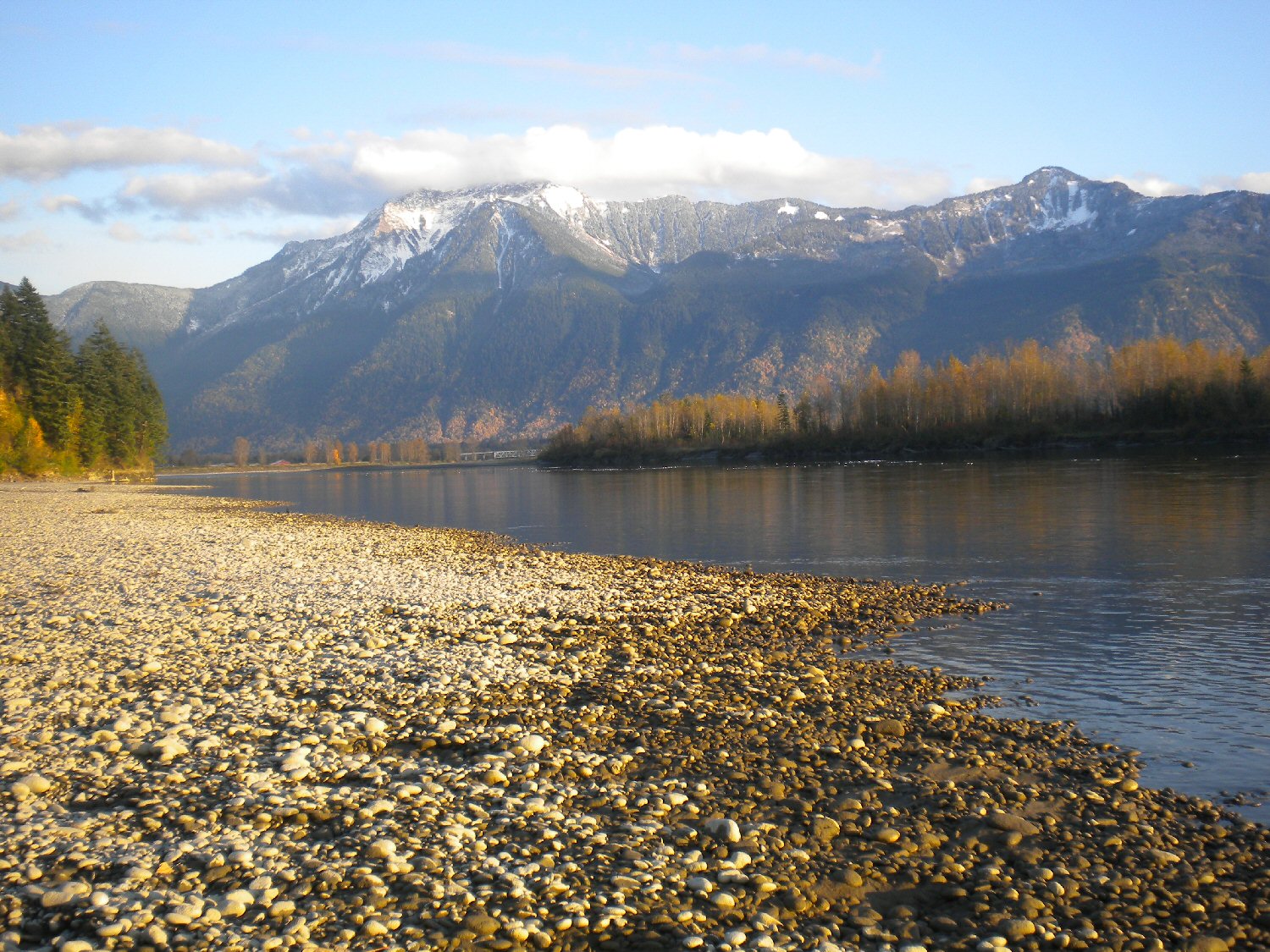
by Sarah Blinco | Jan 19, 2016 | North America, Travel blogger destinations
The X-Files is back in 2016 – how X-traordinary. To say I was obsessed with this show when I was in high school is probably an understatement, but what can I say – it was a good one – still is! Not surprising then, that my X-Files and Vancouver travel journal is a prized possession.
I wasn’t alone – I had mates, Leisa, Michelle, Julie, Jacquie, Melissa… to name but a few. We all fed the beast. There are worse things to be addicted to though, and actually this series taught me about smart storytelling, mythology, history, passion, spirituality and creativity.
Like many fans around the globe, I’ve begun watching episodes again, cherry-picking my favourites, as sadly I don’t have time to get through all nine seasons (just yet). Through the re-watching exercise I’m remembering why I loved it so much – depth, characters and chemistry (despite at-times dodgy ’90s sound and production technology).
I also found one of my favourite destinations in the world because of this special production – Vancouver.
As many diligent fans before me, I too made the pilgrimage to Vancouver to hunt X-Files sets (although by the time my brother and I travelled to North America, filming had been shifted to LA). I ended up discovering a city I feel utterly at home in.
Life is strange and beautiful.
Anyway, the treasured travel diary I kept on that original adventure has since been in my top three personal possessions that I would take with me in the face of that hypothetical fire! The trip was my first foray into freedom, travel, challenges and real growth, fueling an incessant wanderlust; this diary and its stories of our adventures over six weeks in five areas of America and Canada represented all of that, particularly in the many years that followed where travel was not part of my life.
Now the show which inspired me in my teens is back (as of 24 January 2016) and also shot on location in Van, I decided I’d read back to relish in what actually happened across December 1999/January 2000, as Josh and I investigated on our own, throughout British Columbia (BC), to California and beyond.
Did we find what we were looking for?
Read on…
X-Files and Vancouver travel journal
17 January 2000
Vancouver now – so much to tell! Flying into British Columbia (BC) and driving to our city accommodation, I was breathless seeing snow-capped mountains, green grass, clean streets… this place is lovely!
We stay in Gastown, the oldest, original part of Vancouver. Quaint shops line Powell and Water Streets, and downtown city centre is only a block or two away.
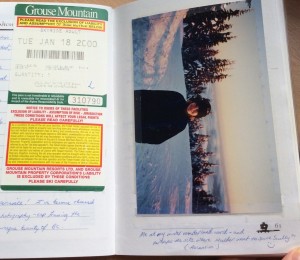 Found Canada Place where the ‘fountain scene’ from X-Files episode ‘Duane Barry’ was filmed, as well as the Gastown rail yards where many other X-Files episodes were shot (located a street behind our accommodation, actually). This, all framed by pretty waterways, ocean and snow-drenched mountains.
Found Canada Place where the ‘fountain scene’ from X-Files episode ‘Duane Barry’ was filmed, as well as the Gastown rail yards where many other X-Files episodes were shot (located a street behind our accommodation, actually). This, all framed by pretty waterways, ocean and snow-drenched mountains.
Met up with [Josh’s friend] Shawna yesterday. Took the skytrain to Surrey to meet her then drove back towards the city and had a look at Granville Island. Along the route, the epic landscape evolved – mountains, flat lands, residential areas, parks, snow – so inspiring, and appropriately (in my head, at least) the ride was set to an anthemic soundtrack of Savage Garden’s album, Affirmation.
Today was the real treat though. Woke up to find sunlight and fairly warm weather (7 degrees!). Decided to aim for Lighthouse Park and Atkinson Point in west Vancouver. This is the forest park where much including ‘Darkness Falls’ X-Files episode was filmed. Found the right bus route and it was a nice ten minute walk through the woods that eventually open up to the sparkling seaway. Beautiful BC!
Caught the bus back to Park Royal Shopping Mall for lunch. By accident, I spotted Buntzen Lake on a map. Previously I couldn’t find this precious location where ‘One Breath’ and ‘Quagmire’ were filmed.
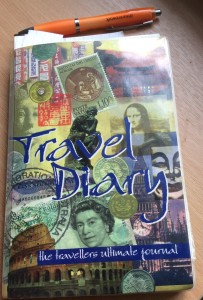 Worked out the bus to Lonsdale Quay, seabus to Waterfront, skytrain to Westminster and then found another bus to take us to the area around Buntzen Lake just fine – I was a woman on a mission; too bad I can’t navigate my way around Brisbane this well.
Worked out the bus to Lonsdale Quay, seabus to Waterfront, skytrain to Westminster and then found another bus to take us to the area around Buntzen Lake just fine – I was a woman on a mission; too bad I can’t navigate my way around Brisbane this well.
Only problem, we didn’t realise it would take an hour and a half to get to this quieter and more regional part of BC – far away from Vancouver. We got there nearly on dark.
A local showed us a short-cut to the remote lake which turned out to be a twenty minute hike through snow, forest and mud, over a dodgy wooden bridge and well into falling darkness.
Emerging out the other side we found this peaceful, shimmering body of water surrounded closely by snowy mountains. It was the picture image of ‘One Breath’ (though I understand this emotional episode was filmed at a few locations around the region). The anxiety and craziness of walking back through a foreign forest in darkness (far too close for my liking to having just seen Blair Witch Project) will be worth it if any photos turn out to capture this simply magic moment. It was stunning, and gratifying finding this place, for many reasons. I can’t believe I’m here, cosy amongst such tranquility and in a world so far removed from Queensland. I should have written more on Vancouver. It’s touched me so.
Grouse Mountain and first time snow
The very definition of ‘winter wonderland’ is stepping off the skyride at Grouse – for above the city, through and beyond the clouds, Grouse was like a glowing powdery-white world of its own. Certainly, we’d never seen anything like this before. Josh tried skiing. I took photos with my new camera. The experience was just amazing. I’ve become obsessed with photography, especially framing the picturesque beauty of BC.
Friday 21 January 2000
Counting my location spots: found Grouse “Skyland” Mountain (‘Ascension’), Buntzen Lake in Anmore (‘Quagmire’, ‘One Breath’, ‘Conduit’), Lighthouse Park (‘Darkness Falls’ forest) and more across the city; Hotel Vancouver from ‘Fire’, St Andrew Wesley Church and St Paul’s Hospital from ‘All Souls’ and ‘Pusher’ respectively. Saw the site of the arcade from ‘DPO’, and the Ovaltine Cafe from ‘Jose Chung’, but these shops in north Vancouver and downtown don’t exist anymore. Found the GM Place stadium [now Rogers Arena] where the huge chess game and final Vancouver ep, ‘The End’ was filmed; and the fountains at Canada Place used in ‘Duane Barry’.
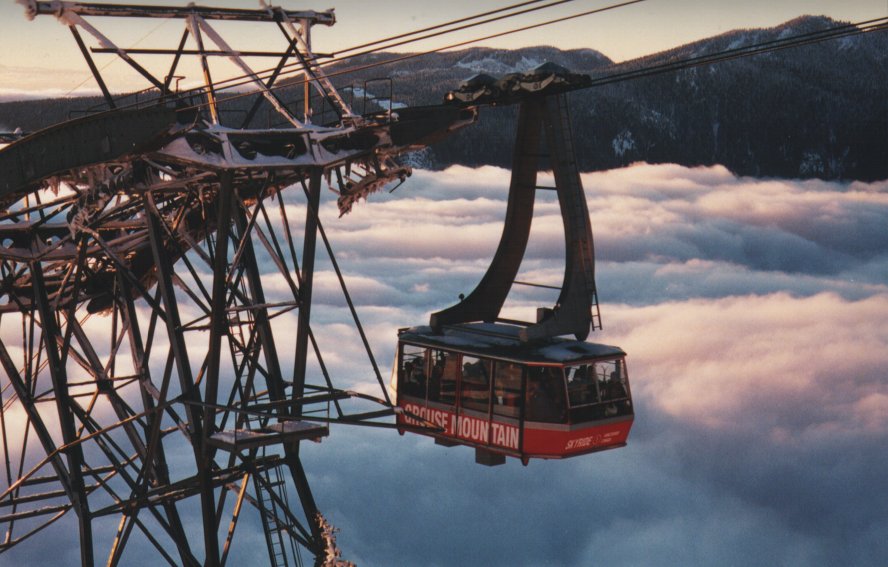
Of course, we stayed in Gastown where much was filmed, including the rail yards and Water Street from ‘Redux II’, and ‘Beyond the Sea’, plus found the ‘angel made of stone’ from the same episode outside the city’s central transit centre. In Vancouver, The X-Files is all around you – particularly brilliant if you’re a fan. There’s always something being filmed around the streets of the city, it’s really cool. Vancouver proves to be true to its nickname, Hollywood of the North.
Pondering all this and sheltered from a cold winter’s night, I enjoyed a post-dinner tea in a cafe on Powell/Water Street, across the road from our hostel. Chatted to the owners who told me more about all the filming which happens around here. In fact, they had a photo of Billy Zane from when he filmed The Survivor in that very space!
We’ve decided to stay an extra day to return and attempt to capture better photos in the sunlight at Buntzen Lake, then we’re going straight to San Francisco. Oh, and I stopped by GM Place earlier to say I stood there (Ricky Martin is playing there on March 3!).
Spent some time on my own over the past couple of days, and I love the anonymity. Breakfasts have an ‘arty’ feel and I have adopted a favourite coffee shop in Gastown where I go almost daily for tea and fave North American find, sticky buns.
Just as I have to leave, I realise I’m sad because I’ve found a place here. Nestled snugly within the Burrard Inlet, snowy slush and bare trees; despite a crisp winter not previously experienced by us, it’s a bitter-sweet comfort being so far away from home. But I can breathe.
Change of scenery – X-Files and LA
30 January 2000
 [My friend] Lauren and I staked out Fox Studios in Los Angeles today – we’ve made it to the one and only Hollywood now! Fox is down on the Avenue of the Stars at Century City, between the massive space of Pico Boulevard and Olympic Boulevard, south of Santa Monica. We saw props and buildings which would be sets, we imagine, but no-one was around for us to question.
[My friend] Lauren and I staked out Fox Studios in Los Angeles today – we’ve made it to the one and only Hollywood now! Fox is down on the Avenue of the Stars at Century City, between the massive space of Pico Boulevard and Olympic Boulevard, south of Santa Monica. We saw props and buildings which would be sets, we imagine, but no-one was around for us to question.
I have a phone number to make use of tomorrow. I’m fearful of hearing that word, ‘no’, but I’m not easy to stop! It’s worth a shot anyhow, to see if I can get on the set – I’ve come so far, why stop now?
Superbowl today, but I’m more excited about the brand new XF New Year ‘kiss’ episode that’s on tonight, ahead of Australia :-)
X-Files Day – 30 January 2000
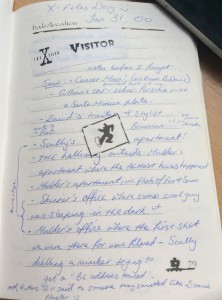 The world’s technology didn’t shut down on New Year’s as predicted, and just as astonishing, I talked to Gillian Anderson at 6.30pm tonight, before she left with [her daughter] Piper! She was lovely and pretty and had her costume on from the movie! I told her I’d come all the way from Australia and she smiled. She asked what we were doing there and I said we’d been watching filming. She laughed and said it must have been “so exciting” (the scene was fairly low action, not that I cared at all). Then she shook my hand and said it was nice to meet me. Dream done.
The world’s technology didn’t shut down on New Year’s as predicted, and just as astonishing, I talked to Gillian Anderson at 6.30pm tonight, before she left with [her daughter] Piper! She was lovely and pretty and had her costume on from the movie! I told her I’d come all the way from Australia and she smiled. She asked what we were doing there and I said we’d been watching filming. She laughed and said it must have been “so exciting” (the scene was fairly low action, not that I cared at all). Then she shook my hand and said it was nice to meet me. Dream done.
The second shot we saw in our two and a half hours on set, was of Scully receiving a phone message from Mulder and then she could be seen adjusting her bra before she left with an overnight bag and the Cigarette Smoking Man (who also smiled and said hello when we were on set)! We listened to proceedings in our own ‘Guest’ director chairs with headphones to hear what was going on, and could see in the monitor the shot in sequence.
I got to meet Gillian Anderson today, and watch her play the character I love. I made this happen somehow. No one can take this away from me! This is amazing. I’ve read back through my diary too, and noted the aspiration to make this set visit somehow come alive here. I believe that it was always meant to happen – I just knew it, but I didn’t know how. ‘I want to believe’ (yep, truly dorky fan-nerd pun right there!).
Turned out we were watching the filming of ‘All Things’. And we could eat what we wanted from the huge snack table. Can’t believe after sweating on hold on the phone this morning and talking through several different people that they agreed to let Josh and I on set. I pulled this one-off by calling Fox myself and basically making it happen (despite being shy!). I can’t quite believe it but I’m very very glad.
2016 - present day
Funnily enough, I still live by this exact mantra today – write your desires down and go for it – regardless of fear. What’s the worst that can happen? More importantly, what’s the best thing that could happen?! That’s the lesson I share.
Looking back, I’m pretty proud of my ‘little self’ for being so resourceful and passionate in pursuit of her dreams, no matter how ‘out there‘ they may have been.
As for Vancouver, I’ve been there a few times now, and we even lived and worked in Gastown for a spell. Despite having to say goodbye to the city repeatedly over the years, it’s been a wonderful X-perience and ride.
Please share your thoughts below, I’d love to hear from you!
If you’re interested in more stories from this divine part of the world, you might also enjoy:
Heaven is Harrison Hot Springs
Coffee & cocktails in Gastown
Love this artist, Lisa Penz
Wonderful Whistler adventures
Discovering Grouse Mountain and Victoria, Vancouver Island
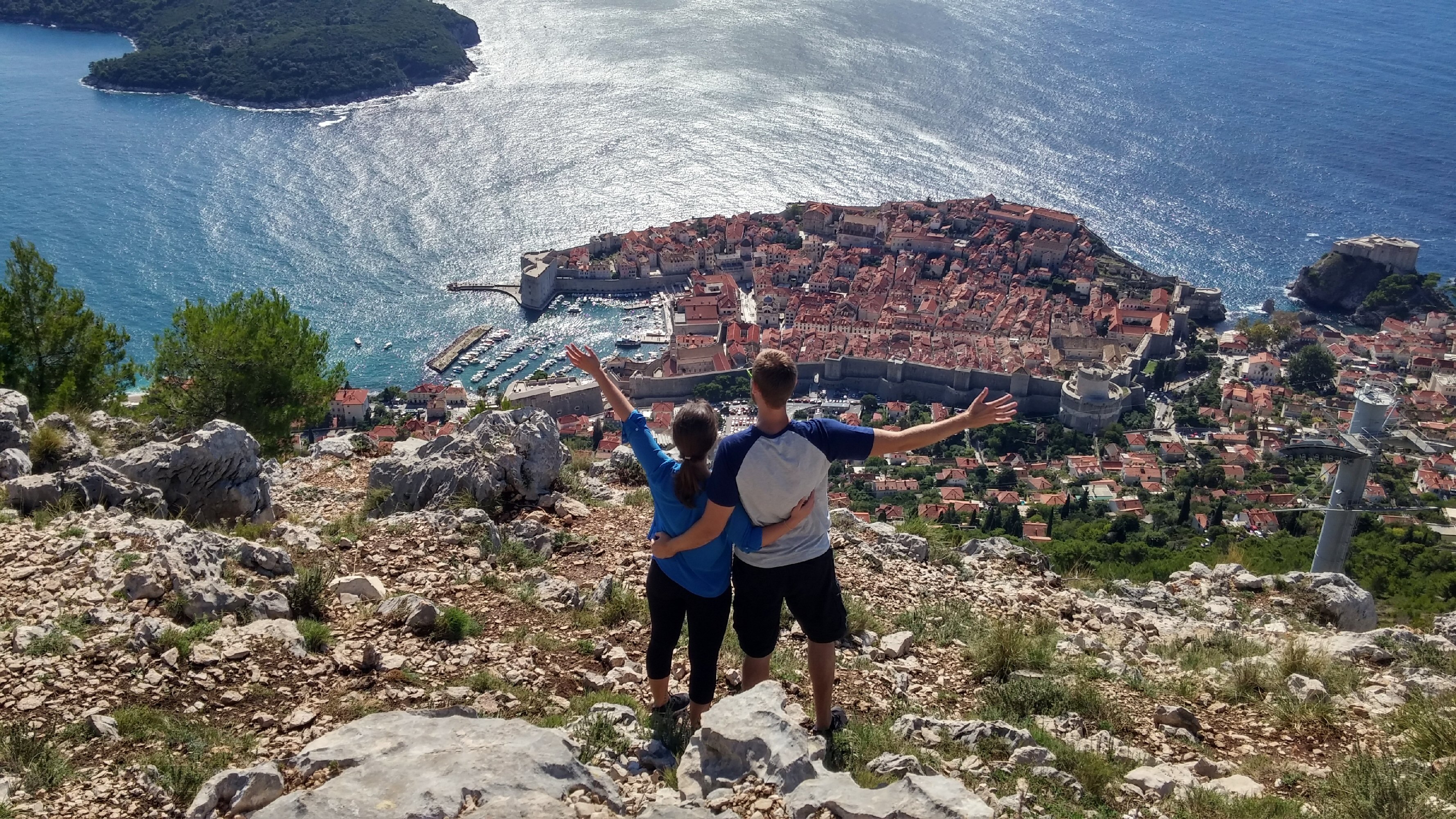
by Sarah & Cooper | Jan 3, 2016 | Europe, Travel blogger destinations, Travel guides, Traveller tales and interviews
…11 top tips on how to travel the world, and all you need to know about tech, travel and clean underwear on the road! Discover more with world-explorers, Ryan and Dee
This past Christmas, Sarah and I decided to visit the coolest city on the Nordic block, Copenhagen. The Danish capital is a clean and dynamic metropolitan city infused with modern architecture, stunning palaces, narrow streets, canals and beautiful homes.
To make our Christmas experience in Copenhagen even more exciting and homely, we were joined by my young cousin, Ryan and his fiancée, Dee, who for the better part of 11 months have been travelling the world, bouncing from one country to the next, across South East Asia, America, Canada, Europe and the UK.
The last time Sarah and I were experimenting on how to travel the world in a similar capacity, we didn’t have the luxury of staying in an Airbnb, or utilising the over-abundance of apps and devices available to locate economical accommodation and flights, compare currencies, and more importantly, make the overall organisation of travel less stressful.
Over a few festive drinks, (at an Airbnb, of course), we had a chat to Ryan and Dee about all they had learned on the road, since packing up in Australia last January (2015).
Here’s the cream of what we learned from our pair of innovative, adventuring millennials.
How to travel the world – 11 top tips with Ryan and Dee
Underwear
The magic number of underwear to carry is 10! Yep, while this is an amusing piece of advice (which was passed onto them on Facebook by another world-explorer before they travelled), they’ve tried, tested and found it to be true. You can live in one pair of jeans for a week but this rule doesn’t apply to underwear, and this number keeps you going for a few days, even when it’s a challenge to get your washing done.
Accommodation
Over 90 per cent of their travels (and when friends have not been able to host), they’ve chosen to stay in an Airbnb – an accommodation brand name that, as travellers know well, has really come to the forefront of the industry over the past year or so. They say the quality, variety, location and price of accommodation Airbnb offers is incomparable. Two of their favourite Airbnb accommodations were in Iceland, and both offered experience as well as a roof over their heads.
One was an old van converted into a room with a double bed and a very warm heater. The scenery was exquisite, and they were positioned uniquely in front of snow-capped mountains with stunning views of the Icelandic wilderness. The other, a barn converted into comfortable accommodation set right in the middle of an Iceland horse farm. The host openly welcomed guests to feed and play with the beautiful animals, all included in the standard price of the listing.
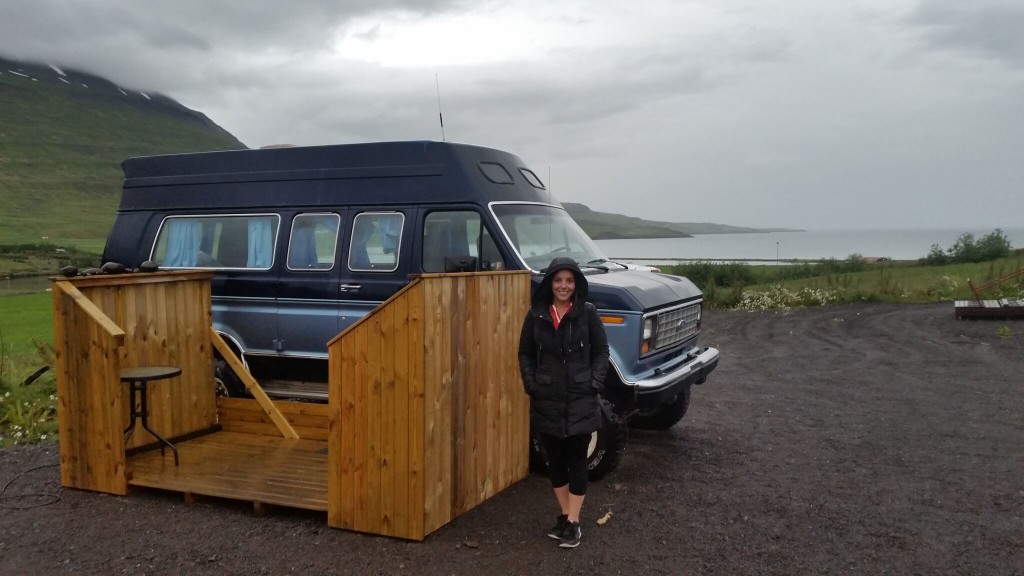
Airbnb is based on trust and reviews. Guests and hosts are both reviewed by one another. Treat the host’s home with the utmost respect, leave it clean (like you hopefully would your own space) and communicate openly and honestly. A bad review could prevent you being invited to stay with an Airbnb in the future.
Getting around
For booking the cheapest mode of transportation with the best rates they like Skyscanner, Google Flights and Rome 2 Rio.
Skyscanner – an airline comparison site featuring plenty of airlines around the world, some you probably have never heard of. Skyscanner brings them all together on one convenient space and allows you to compare based on the most important factor, price.
Google Flights – another airline comparison site with a very helpful, unique feature which allows you to view the prices of nearby cities of the region you are flying to. A slight variation in your journey can help you save hundreds, or maybe thousands of dollars off the cost of your next trip.
Rome2Rio – used to search for all types of transport; buses, trains, car rental and flights. Rome2Rio makes suggestions like flying from Dublin to Bristol then catching a bus to Cardiff which was three times cheaper than flying direct Dublin to Cardiff!
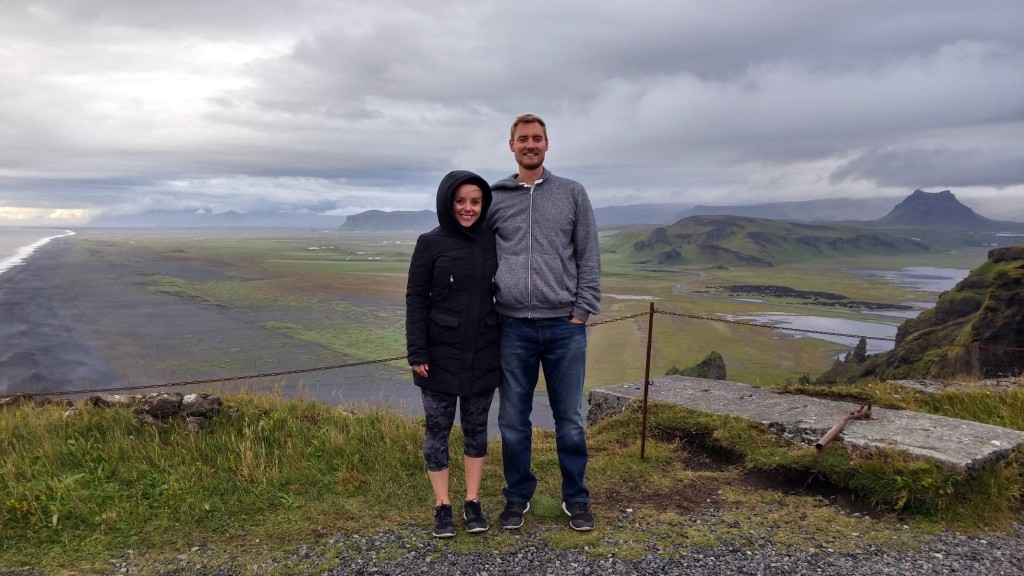
Communication and Technology
Before heading off on their grand adventure, Ryan and Dee chose to arm themselves with two different top-end smartphones (Samsung Galaxy S5 and LG G3). They decided on this route so that, for example, they could get a better response in situations where one phone’s WiFi works and the other doesn’t; the cameras work in different ways in varying situations.
Also, sometimes one phone will attract a better SIM card deal around the world than the other, or provide technical compatibility that another device cannot. All in all, this choice has helped with cost-efficiency, security, communication and image/video capture.
Cloud backup
Ryan and Dee will not live (or travel!) without access to cloud storage. At around $10 a month, they have unlimited Dropbox storage to safely backup everything – documents, photos, video – to the cloud. Their advice is to plan for all of your belongings to be stolen e.g. passports, visas, personal documents and photos – that’s worst case scenario. If you’re fine to access it via any computer in the world, then your worries are greatly alleviated.
Online security
Don’t get complacent about password-protecting your devices and software. They’ve had personal experience at being surprised about what thieves can gather out of the smallest bit of information that can be garnered from anything from your text messages to emails and logins. If it has the ability to be secured, lock it up!
On the other side of this, Dee and Ryan have found that it’s really easy to ping locations back to family using functions on apps like Google Hangouts, Viber and Whatsapp. This is a terrific idea, we think, because when you’re travelling around a country indefinitely and with no set plans, it’s important that someone at a home base has a good idea where you have been and where you are. This goes beyond just checking-in on Facebook!
Making friends on the road
Their top tip? Join a local pub crawl everywhere you go! This surprised me at first, but I realised it makes total sense, because mostly people joining in are fellow travellers and soon-to-be international friends. Also, don’t be afraid to go and talk to people when you are out, because let’s face it, most people are lovely once you get chatting. They have made a lot of friends joking about aeroplane legroom, suggesting ride-shares, and even asking locals on the streets for recommendations on what to do in their hometown.
Networking
It’s not just for business people! Start and maintain WhatsApp groups as you travel, and share photos with your new friends (but do this privately, out of courtesy).
Because Ryan and Dee have cleverly stayed in touch on Whatsapp (and also Facebook), they’ve been invited to stay in exotic places around the globe. Their new friends love seeing them again, and are proud to showcase their homeland to this friendly pair of Aussies.
They have actually based travel destinations solely on catching up with new friends they have met on the road. One thing they are looking forward to most on returning home to Australia is having their international mates come and visit.
Packing
They reminded us to prioritise what you need, and organise important belongings into one bag; that is, toiletries, clothes for the day or week. Keep your most-needed belongings at the top. Also, they split their belongings so that if a bag was to go missing, they both still have some clothes and essentials to share. Pack light, you do not need to travel with five pairs of jeans.
Over the past year, the contents of their bags has completely changed – from singlets and shorts in South East Asia, to warm coats and jeans in Europe. Remember, it’s better to pack light than regretfully over-pack it. If you desperately need something in particular, never fear, if you can purchase it during your travels.
Staying in touch
Dee and Ryan use Facebook to search for people who live in places they are planning to visit, and have found it to be a really easy way to find friends who are either there when they’re visiting, or friends who have just been and who can share travel tips.
Favourite apps
After all this talk about tech, what are their must-have apps (aside from Airbnb, Whatsapp and Dropbox, as mentioned above) for on the road?
1. Google Maps – Ryan and Dee use this app religiously as it provides detailed information about an area, as well as specific directions from one location to another. Important when trying to find an Airbnb in an unfamiliar city. Thankfully the app also offers aerial and street views of properties. How many arguments do you think this prevents!
2. Maps.Me – the offline equivalent of Google Maps. Although nowhere near as many features, it will still get you back to your accommodation in a pinch. Country maps are downloaded while on a WiFi connection, to be used later while offline.
3. XE Currency – allows comparison and conversion of currencies on-the-go. They found this helpful particularly when purchasing groceries, souvenirs and the odd beverage, and is critical when you’re sticking to a budget.
4. Uber – connects drivers with passengers directly, unlike hailing a taxi or booking through a centralised service. The pair find Uber to be significantly more economical than a taxi. Also, the app tells you how many cars are in your area, and the cheapest, fastest route to a destination.
5. Tripomatic – allows users to choose attractions they want to see and creates a day-by-day itinerary for any journey. Travel books are too heavy to carry, this app is the perfect replacement.
Sarah and I collected magnets of our favourite destinations around the world. Ryan and Dee’s tradition is a little more physical – they take photos of themselves doing handstands in front of iconic landmarks and buildings!
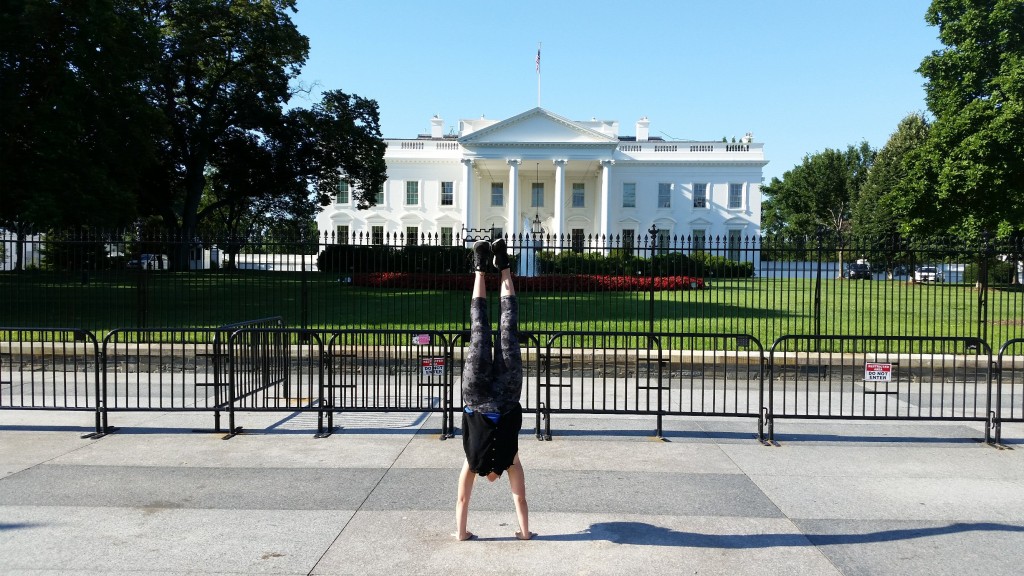
If you’ve found this helpful, have a tip or story to share, please let us know in the comments below.
Read about our Christmas in Copenhagen here
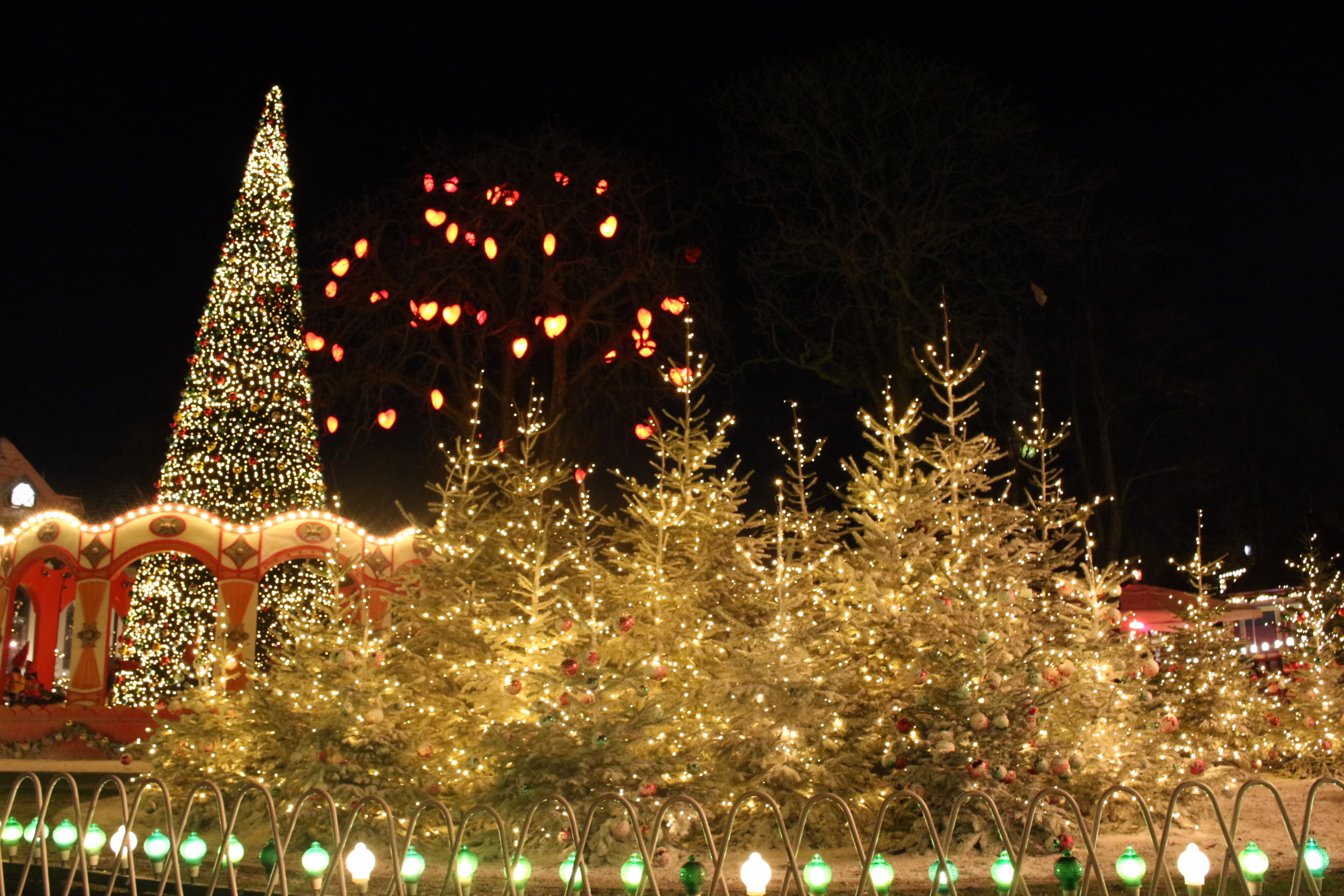
by Sarah Blinco | Dec 27, 2015 | Autumn and winter in Europe, Europe, Travel blogger destinations, Travel guides
I’ve always been attracted to this place. I think as a child I spotted a romantic photo of the city drenched in snow and have wanted to visit for Christmas in Copenhagen ever since!
Christmas in Copenhagen: getting there
When some cheap airfares from London on Norwegian Air popped up on my radar, I booked it without too much of a second thought. You should keep an eye out as there are often inexpensive airfares to this part of the world, which means you too can make it for Christmas in Copenhagen!
I also love that Aussie, Princess Mary lives in Copenhagen, although ironically she was visiting our home city, the Gold Coast, when we dropped by her home country, Denmark on this visit.
Things to do for Christmas in Copenhagen
We only had a few days in the city, Christmas eve to December 27.
This wasn’t long enough because what I failed to discover pre-flight booking is that a LOT of Copenhagen is closed over the Christmas period. Sadly most of our time was also rain-soaked (alas, not snow-soaked).
We caught up with fellow world-travellers and family, Ryan and Denyka, in the city though, so that did make for a special Christmas in Copenhagen experience!
We feasted by the water at the chic Marriott in the city centre, and while definitely not the cheapest option, we decided to splash out for the special occasion.
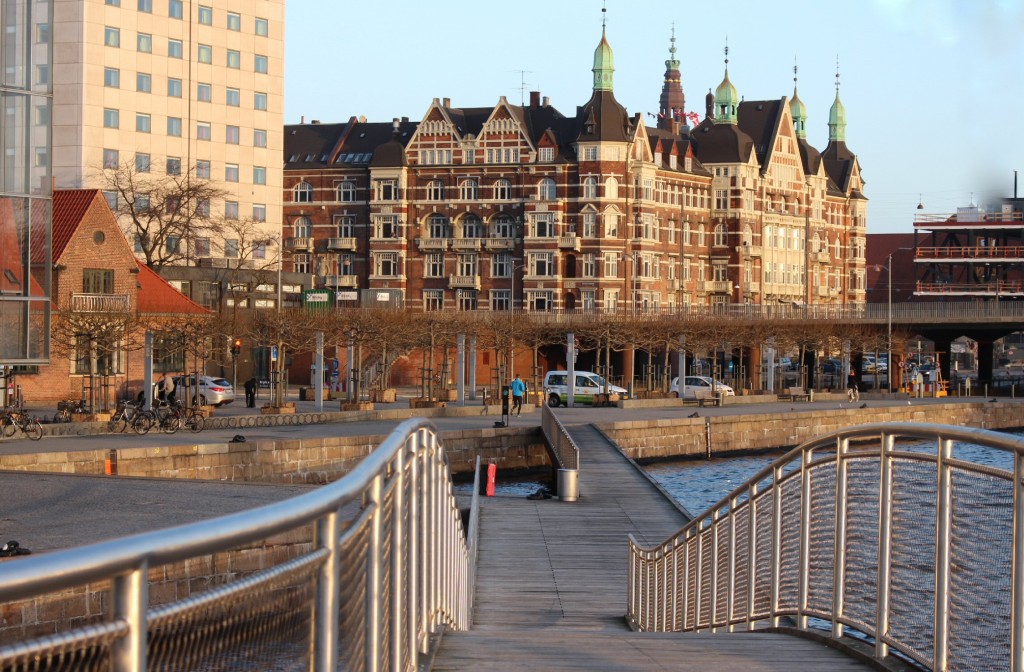
Christmas in Copenhagen: all you need to know
- Copenhagen is beautiful and clean, but much is closed across the Christmas period. The Christmas markets are very famous, however they are mostly wrapped-up (closed) by December 23.
- The City Sightseeing hop-on-hop-off buses do run across the festive period, and offer an easy way to get your bearings across the different parts of town.That way, you can choose where you want to go back to and explore. Some tickets are good for 48 hours too. Many of these tours offer a Carlsberg Brewery experience but sadly this is not on offer all the time (boo hoo) so check the website or with a tour adviser in the city for options. Carlsberg is mostly known as a premium and tasty beer range, and the brewery was founded in Copenhagen in 1847, so plays a cool role in this colourful city’s history.
- I’ll be honest, the city is expensive. More expensive than London and Sydney! So, plan your trip accordingly and my lesson is that cheap airfares do not necessarily equal an economical holiday (we found it was quite the opposite, in fact).That said, there are some excellent accommodation deals to be found on Airbnb.
- Public transport is easy and efficient enough, but we discovered Uber offers competitive deals for getting around, so sign up on the app before you leave home.If you are staying in the city’s heart however, Copenhagen is pretty easy to navigate on foot.
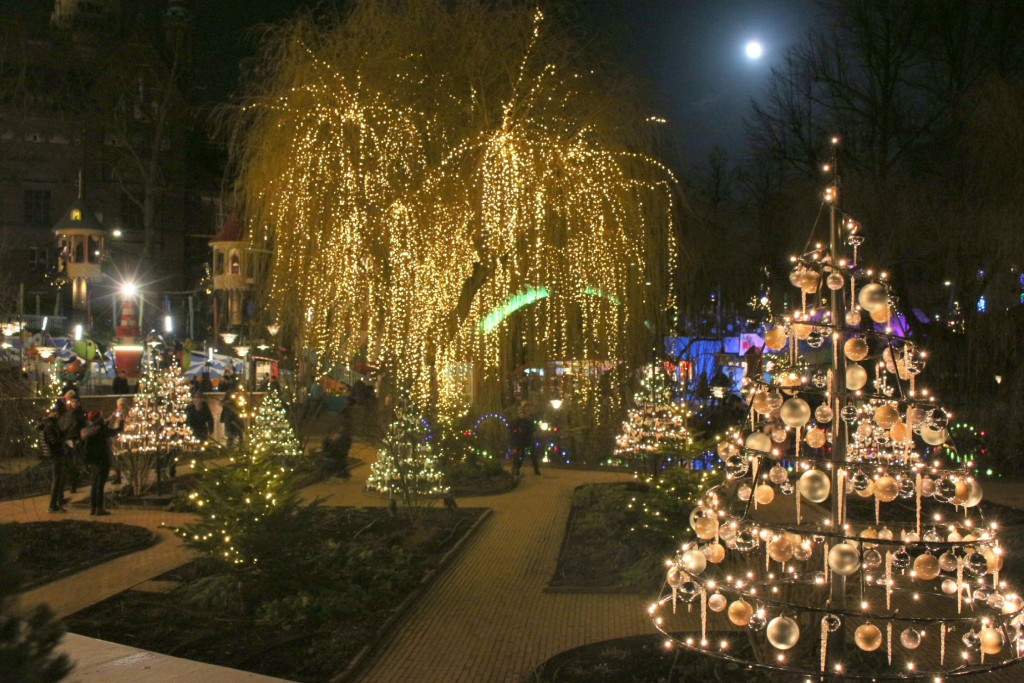
‘Hygge’ and a cosy Christmas in Copenhagen
Before heading over to Denmark from the UK and as winter approached in the northern hemisphere, we began to read a lot about a heart-warming Danish concept called ‘hygge’.
Recorded as being one of the happiest places in the world despite long, cold, dark winters, it seems some of us have a lot to learn about taking good, cosy care of ourselves and loved-ones in the colder months.
We did indeed feel the warmth, despite the chill.
Sitting by the fire on a cold night, wearing a woolly jumper, while drinking mulled wine and stroking a dog – probably surrounded by candles. That’s definitely ‘hygge’.
Read more about it Hygge, especially if you plan to spend Christmas in Copenhagen.
Christmas in Copenhagen – Tivoli is the highlight!
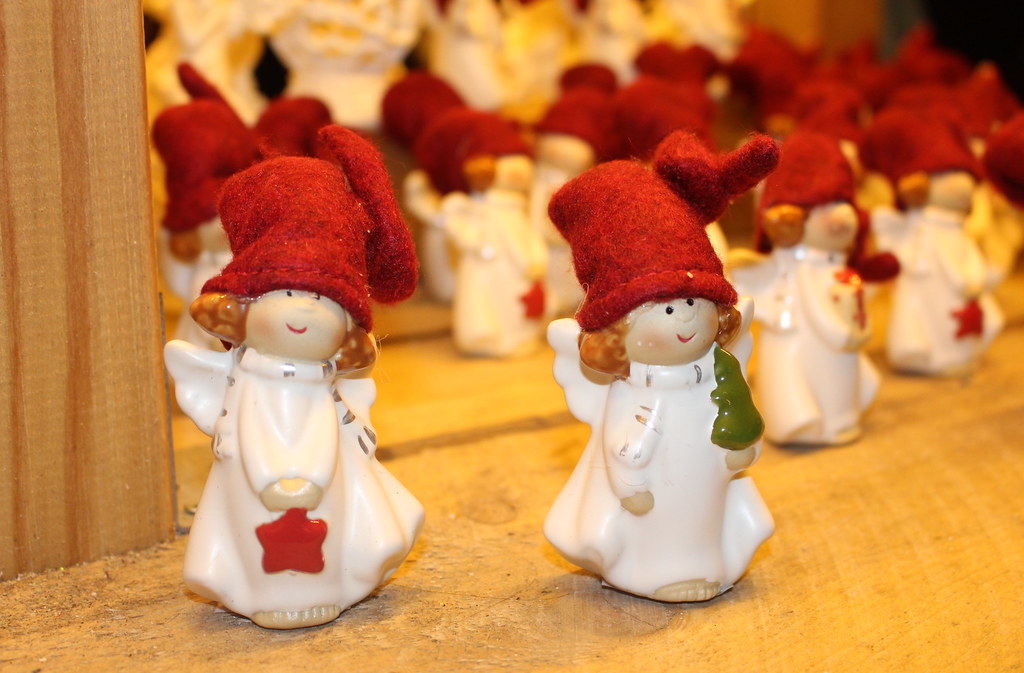
The Copenhagen treasure that was open – in a dazzling display of lights, cheer and romanticism, was Tivoli Gardens.
This is my new favourite international Christmas experience, scraping by my other fairy-light-showered fave, Capilano Canyon Lights in Vancouver.
Tivoli is situated right in the middle of the city, opposite Copenhagen Central train station, and it’s the second-oldest amusement park in the world (after Dyrehavsbakken in nearby Klampenborg), opened in August 1843.
Perhaps the term ‘Tivoli’ sounds familiar to you, and it does have historical roots. According to Wikipedia:
The amusement park was first called ‘Tivoli & Vauxhall’; ‘Tivoli’ alluding to the Jardin de Tivoli in Paris (which in turn had been named from Tivoli near Rome, Italy),’Vauxhall’ alluding to the Vauxhall Gardens in London. It is also mentioned in various books, like Number the Stars by Lois Lowry.
The park was just the right size to wander around, and features fun, contemporary rides, but hasn’t lost any of its old-world fairground charm.
In fact, here you’ll find one of the oldest wooden roller coasters in the world (1914), and one of only seven remaining on Earth that is still operated by a brake man.
With spectacular light shows, markets, every building and structure lit up in festive glory, eateries, rides and parades, this is an experience everyone in our little travel group now highly recommends.
If you can’t be at ‘home’ for Christmas, then this is the way to do it!
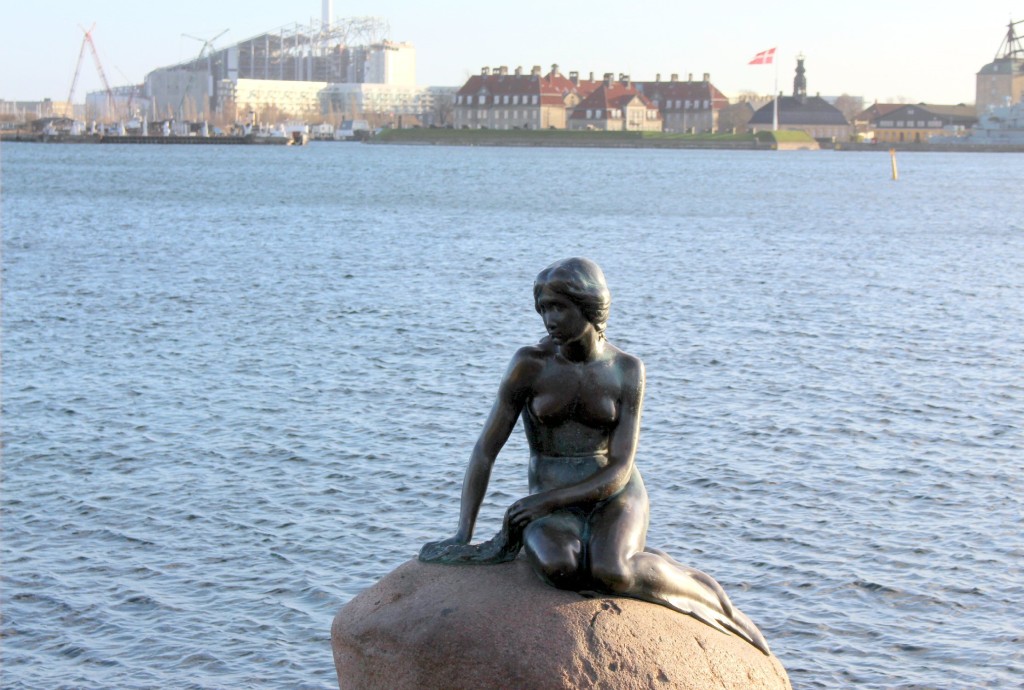
Returning for Christmas in Copenhagen…
There’s so much we didn’t get to do on our short visit to this part of the world, and the city itself is brimming with extraordinary spaces, quaint buildings steeped in history, lovely parks and waterways.
I was struck by the interesting statues and sculptures too, some of my favourites being the glorious angel statue on the World War 1 maritime monument, and not too far from this but on the water (waiting by the shore for her prince), the very famous Little Mermaid, who celebrated her 100th birthday in 2013.
There’s plenty to go back to in this clean and inviting city, but the one thing I wish I had known about sooner so I could have planned the train trip (around 45 minutes from Copenhagen central), is Kronborg Castle, home of Hamlet!
This is Denmark’s most famous and striking castle, and it was immortalised by Shakespeare in the 1600s. Add it to your list if you’re interested in this kind of history too.
Have you been? We’d love to know your tips and experience – drop us a line in the comments below.






 Four years ago (2012), after being retired for six years, and at the age of sixty eight, I looked up the U3A (University of the Third Age) website to see what courses were on offer, and to my delight, ‘Learning Spanish’ was one of them, so I decided to enrol.
Four years ago (2012), after being retired for six years, and at the age of sixty eight, I looked up the U3A (University of the Third Age) website to see what courses were on offer, and to my delight, ‘Learning Spanish’ was one of them, so I decided to enrol.
 I would highly recommend to anyone considering learning a second language, to go for it. It really gives you quite a boost when you see that you are capable of doing it.
I would highly recommend to anyone considering learning a second language, to go for it. It really gives you quite a boost when you see that you are capable of doing it.

 Found Canada Place where the ‘fountain scene’ from X-Files episode ‘Duane Barry’ was filmed, as well as the Gastown rail yards where many other X-Files episodes were shot (located a street behind our accommodation, actually). This, all framed by pretty waterways, ocean and snow-drenched mountains.
Found Canada Place where the ‘fountain scene’ from X-Files episode ‘Duane Barry’ was filmed, as well as the Gastown rail yards where many other X-Files episodes were shot (located a street behind our accommodation, actually). This, all framed by pretty waterways, ocean and snow-drenched mountains. Worked out the bus to Lonsdale Quay, seabus to Waterfront, skytrain to Westminster and then found another bus to take us to the area around Buntzen Lake just fine – I was a woman on a mission; too bad I can’t navigate my way around Brisbane this well.
Worked out the bus to Lonsdale Quay, seabus to Waterfront, skytrain to Westminster and then found another bus to take us to the area around Buntzen Lake just fine – I was a woman on a mission; too bad I can’t navigate my way around Brisbane this well.
 [My friend] Lauren and I staked out Fox Studios in Los Angeles today – we’ve made it to the one and only Hollywood now! Fox is down on the Avenue of the Stars at Century City, between the massive space of Pico Boulevard and Olympic Boulevard, south of Santa Monica. We saw props and buildings which would be sets, we imagine, but no-one was around for us to question.
[My friend] Lauren and I staked out Fox Studios in Los Angeles today – we’ve made it to the one and only Hollywood now! Fox is down on the Avenue of the Stars at Century City, between the massive space of Pico Boulevard and Olympic Boulevard, south of Santa Monica. We saw props and buildings which would be sets, we imagine, but no-one was around for us to question. The world’s technology didn’t shut down on New Year’s as predicted, and just as astonishing, I talked to Gillian Anderson at 6.30pm tonight, before she left with [her daughter] Piper! She was lovely and pretty and had her costume on from the movie! I told her I’d come all the way from Australia and she smiled. She asked what we were doing there and I said we’d been watching filming. She laughed and said it must have been “so exciting” (the scene was fairly low action, not that I cared at all). Then she shook my hand and said it was nice to meet me. Dream done.
The world’s technology didn’t shut down on New Year’s as predicted, and just as astonishing, I talked to Gillian Anderson at 6.30pm tonight, before she left with [her daughter] Piper! She was lovely and pretty and had her costume on from the movie! I told her I’d come all the way from Australia and she smiled. She asked what we were doing there and I said we’d been watching filming. She laughed and said it must have been “so exciting” (the scene was fairly low action, not that I cared at all). Then she shook my hand and said it was nice to meet me. Dream done.








